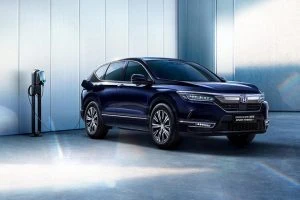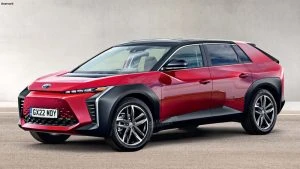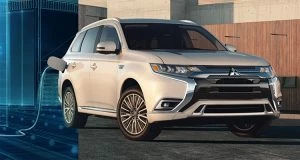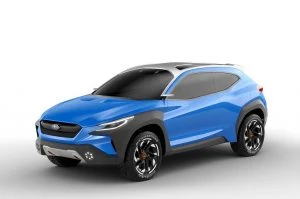Archive for June, 2021
Carbon Dioxide Emissions and EVs

Founder of Greenpeace, Patrick Moore, has some knowledgeable things to say about carbon emissions and CO2 in the atmosphere. Many politicians and “scientists” are stating that CO2 is the big baddie that will cause us all to burn up in smoke as the temperature of the earth will continue to heat up; and that life on earth is in terrible danger, and that the only way out of this escalating CO2 is to inflict all humans to pay higher taxes and drive EVs. It all sounds a little fishy!
According to the Intergovernmental Panel on Climate Change (IPCC), CO2 emissions from fossil fuels, which constitute 85% of our energy use, must be reduced to zero by 2100. It is their idea that a vast and diverse mix of policies should be employed to restrain and reduce the use of light duty vehicles (LDVs), the sort of vehicles that you and I drive. The IPCC suggests “aggressive policy intervention to significantly reduce fuel carbon intensity and energy intensity of modes, encourage travel by the most efficient modes, and cut activity growth where possible and reasonable”. That sounds like severe action going down like a lead balloon upon hard-working people in the world trying to pay escalating taxes to the fat cats in high places. Maybe some of it’s true.
Apparently, those in the IPCC claim that “if we don’t save ourselves from ourselves we’re toast!” Scientist Patrick Moore says that “Here is what is strange, though. All life is carbon-based; and the carbon for all that life originates from CO2 in the atmosphere. All of the carbon in the fossil fuels we are burning for energy today was once in the atmosphere as CO2 before it was consumed by plankton in the sea and plants on the land. Coal, oil and natural gas are the remains of those plankton and plants that have been transformed by heat and pressure deep in the earth’s crust. In other words, fossil fuels are 100% organic and were produced with solar energy. That sounds positively green!”
Other scientists also say these coal and oil remains were laid down during the catastrophic flood that occurred over the earth’s surface as recorded in biblical events.
Patrick Moore, and other scientists, also state that if there were no CO2 in the earth’s atmosphere, the earth would be a dead planet. The US Environmental Protection Agency (EPA) has deemed this essential ingredient for life a pollutant! How can CO2 be bad?
Carbon Emissions is the term used by governments and policymakers as the emissions that come from burning fossil fuels for energy. Patrick Moore continues, “…This term is entirely misleading because CO2 is not carbon. CO2 is a colourless, odourless, tasteless gas which is an indispensable food for all living things. Can you have too much of it? In theory, yes. That is what climate alarmists say is happening now! They are stating that “CO2 levels are getting too high!” Are they right? The Big Picture tells us something surprising. For most of the history of life on earth, CO2 has been present in the atmosphere at much higher levels then it is today. During the Cambrian explosion, when multicellular life came on the scene, CO2 levels were as much as 10x higher than they are today. From a Big Picture perspective, we are actually living in a low CO2 era…”
Patrick also suggests that science tells us that “… the optimum growth for CO2 is 4–5x what is currently found in our atmosphere. This is why quality greenhouse growers all around the world actually inject CO2 into their greenhouses. They want to promote plant growth, and this is the way that they do it. Likewise, higher levels of CO2 in the global atmosphere will promote plant growth. This is a good thing! This will actually boost food and forest productivity, which will come in handy with the human population of earth set to continue to grow.”
Patrick Moore, co-founder of Greenpeace, for Prager University, states that “… we are seeing the positive effects of increased CO2 now. Satellite measurements have noted the greening of the earth as crops and forests grow due to our higher levels of CO2. It turns out that Carbon Dioxide (CO2) are not dirty words after all. We should celebrate CO2 as the giver of life that it is.”
What are the more dangerous emissions from fossil fuels? The majority of vehicle exhaust emissions are composed of carbon dioxide, nitrogen, water vapour, and oxygen in unconsumed air. Carbon monoxide, unburned fuel, nitrogen oxides, nitrated hydrocarbons, and particulate matter such as mercury are also present in vehicle exhaust emissions in smaller quantities. Catch these nastier particulates, which are hazardous to our respiratory system, via the catalytic converter or other means, and the conventional internal combustion engine is not quite such a monster. In fact, a decent hybrid vehicle for city driving along with hydrogen fuel-based vehicles seems a much better alternative to a mass wave of EVs and taxes. Hybrids and hygrogen-celled cars in congested areas seem a perfect fit for now.
Hybrids currently available in Australia include: many Toyota and Lexus models, Toyota Corolla SX Hybrid, Toyota RAV4 GXL Hybrid, Toyota Camry Ascent Sport Hybrid, Mitsubishi Outlander PHEV, Hyundai Ioniq, BMW X5 xDrive45e, Lexus ES300h Sports Luxury, Volvo XC90 T8 Twin Engine Hybrid, Mercedes-Benz C 300e PHEV and BMW 330e iPerformance PHEV.
If you’re interested in more from Patrick, have a look at: https://www.prageru.com/video/the-truth-about-co2/
EVs and the Japanese Manufacturers
I like to get a feel for what is truly happening in the EV world by heading over to the Japanese to see what they are up to. The Japanese make the best cars in the world, at least from a reliability and practical point of view, so it makes sense to me to have a look at what their plans are when it comes to EV innovation, invention and implementation.
Mazda

Mazda MX 30 EV
Mazda is planning to introduce ‘Skyactiv Multi-Solution Scalable Architecture’ for hybrids, PHEVs and EVs in 2022, and they plan to offer three EV models, five PHEV models and five hybrid models sometime between 2022 and 2025. Mazda will also keep hybrids and PHEVs as part of their saleable new cars beyond 2030.
By the end of 2023, Mazda plans to show at least two plug-in hybrids by the end of the year.
In 2026 Mazda plans to show the platform for a new generation of EVs in the early part of the year.
By 2030 Mazda plans to offer a hybrid or electric variant for every model that Mazda has in their line-up. However, even though Mazda will develop a dedicated EV platform by 2025, Mazda’s majority of vehicles beyond 2030 will be hybrids and plug-in hybrids, and, as such, Mazda is not about to stop developing its internal combustion engines anytime soon.
Honda

Honda EV Crossover
Honda plans to develop its own solid-state battery tech, rather than relying on outside developers.
By 2023, a Honda EV built in partnership with GM, reportedly a crossover, is expected to enter production.
Honda foresees that 40% of their models will be electric or hydrogen fuel-cell powered by 2030, climbing to 100% by 2040. Honda is one of just a handful of automakers alongside Toyota, Hyundai, and BMW, to devote plenty of their development energy into to hydrogen fuel-cell vehicles.
Toyota

Toyota BZ EV Concept
By 2025, Toyota plans to launch 60 new hybrid, electric, or fuel-cell vehicles by the end of that year, and it also expects to have reached its goal of selling 5.5 million EVs each year. Their dedication to hydrogen fuel-cell vehicles is strong, and they remain big game players in this sort of technology.
Looking across the Tasman (where NZ’s PM, Jacinda Ardern, put her foot in it by claiming that Toyota would be providing EV utes in just 2 more years) it is evident that Toyota will not be putting all their eggs in one basket and going totally bent on EV production. Toyota is adamant that a slow EV uptake is more likely, and hence they would not be giving up on their particularly good hybrid engine technology any time soon.
Nissan

Nissan ids Concept EV
Nissan is the manufacturer of the highly successful Nissan Leaf EV Hatchback, which has been in production for some years now. By 2023, Nissan plans to have launched eight EVs by the end of the year and will be hoping to be on target to sell 1-million hybrid or electric vehicles, globally, per-year. Nissan states that their hybrid technology and their technology to improve their internal combustion engines won’t be stopping before 2030, at least.
Mitsubishi

Mitsubishi Outlander PHEV
Mitsubishi has the marvellous Outlander PHEV, which has been in production for many years now. By 2030, Mitsubishi plans for 50% of its global sales to come from hybrid or electric vehicles. I guess that leaves 50% to be still made up of efficient internal combustion vehicles.
Subaru

Subaru Solterra EV Concept
Subaru, by 2030, expects 40% of its global sales to come from hybrid or electric vehicles. By 2035, Subaru plans to have a hybrid or electric version of every vehicle in its line-up. Subaru seems to be singing off a similar song sheet to Toyota, where they both suggest that the hybrid vehicle will prove to be more popular in the short term, particularly as the EV infrastructure has a long way to go.
By 2050, Mazda, Mitsubishi, and Nissan have made bold plans to reach net-zero carbon emissions.
The big questions are: Will the EV-charging infrastructure match the manufacturer claims? Will people be able to afford an EV, let alone the huge cost to make their home charge ready, as the ideologically bold demands that some governments introduce along with big taxes? Who is going to pay for all of this?
I read a recent comment where a reader of ‘Car and Driver’ made a very informed comment:
“It’s a ‘no thanks’ on Li batteries from me. Lithium extraction has already spoiled the Atacama desert in Chile and now they have their sights set on the American West. I can reduce my CO2 footprint far more by just driving less than by purchasing a 100 kWh battery, and the 10-20T of CO2 that was released to make it. I’ll wait for fuel cells. As a Toyota driver… I have time.”
How Secure is Your New Car?
As more new vehicles come to the market boasting the latest and greatest technology, manufacturers are looking to simplify the driving experience. This means getting you up and running with easier access to your car. So, what’s one of the prominent solutions?
Well, this has translated into keyless entry and push-button ignition becoming commonplace across the latest models. That’s not to say it was ever difficult to use a key, but clearly the boffins behind this technology thought that was getting all too cumbersome. So with the traditional and trusted key now looking lonely on the outer, is everything actually all fine and well?

The risk associated with keyless entry
Not everything may be as it seems. In some corners there is a growing chorus of industry experts suggesting that today’s new cars are becoming too easy to steal. How, you might ask, as you look quizzically down at your keyless entry remote. Well, that very device is among the design aspects that some have reasonable grounds to be concerned.
This new generation of remotes transmit wireless signals that are automatically picked up within a proximity of the vehicle. As these transmitters work in much the same way as any other device that emits a code over a certain frequency, they are not necessarily immune from interference. And while it may not sound the easiest workaround, the risk remains, a device configured to pick up and read these frequencies has the ability to mimic the remote and replicate those very codes to the same effect.
On the contrary, however, some auto-makers, Tesla perhaps being the most prominent example, have designed a level of security across their cars that few of us have ever seen. Tesla Sentry Mode is used to deter thieves before they even attempt to steal the car, ensuring that the car is constantly in a ‘monitoring’ state thanks to its side cameras, front camera, and sensors that remain active even while the car is off.
The system is able to notify the owner and individuals within range of the car should a theft take place, displaying a message that recording is in progress on the dash. There is also the Pin to Drive feature that complicates things for a would-be thief. With that said, Tesla vehicles have also fallen foul to bluetooth and other cyber-intrusive instances of theft.

How realistic is the problem?
Sure, you can lock your car, but a keyless entry remote will continually transmit a code in anticipation that you will return to your car at some point and access the vehicle without retrieving the remote. Some manufacturers have embedded additional safety features, such as PIN-activated ignition like we mentioned with Tesla, or a motion-activated fob that is immobilised when no longer moving, or a remote that broadcasts across a wider range of frequencies.
Now if you’re thinking all this sounds highly preposterous and a convoluted way to steal a car, you may want to pause on those thoughts. Check out this field test from What Car, or this one from Which. In what is likely to be surprising news to many drivers out there, some of the market’s most premium vehicles are susceptible to being ‘stolen’ in under 30 seconds.
For now manufacturers are continuing to work on refining and improving the technology. Tesla might be a leader in this field at this stage, but the latest tech does not necessarily mean the greatest tech. In the meantime, you may want to consider requesting your dealer disables that keyless entry remote, or you take to buying a Faraday Bag to shield the remote from emitting electromagnetic signals. Sometimes keeping it simple truly is better.
Leaving the Past Behind

Over the last decade an array of features has been evolving expeditiously in automotive circles. New cars that we drive today are vastly different to the cars that were driven 10 to 15 years ago. Technology has come on very quickly, and so too has the world that we live in. Today we have amazing things like online streaming, extensive EV models, the invention of the Android phone, accident avoidance, adaptive cruise control, infotainment everything, GPS tracking, Rover on Mars… The list is long. What big features are found in today’s new cars that weren’t part of the package in an equivalent new car bought back in the noughties?
Here are just some of the changes:
Parking Assist
With the introduction of cameras around the outside of the car (the most common, of course is front and back), backing into small spaces, parallel parking or even just checking your blind spot have all become much easier tasks to perform about town, at home and up the neighbour’s tricky driveway. Rear-view cameras have made a big impression to the level of satisfaction enjoyed by customers across all car models for some time; it has been a real winner. 360-degree cams, a bird’s eye view camera and integrated dash cams are also making their way on-board. Citroen C3’s Connected-CAM gives you a recording through the dash cam, which, should you be involved in a collision, may vastly help in making your insurance claim run smoothly.
Information and entertainment
Put these two words together and we get ‘Infotainment’, and this word originated from the infotainment systems that we now find as standard features of almost every new car on the market. Our huge desire to be connected with the internet and with others seems insatiable, and 10 to 15 years ago the luxury of a CD player and cruise control are now pretty standard items for new base level cars. The impressive growth in Social Media and instant messaging has created a huge vacuum for car designers to fill, so developing systems inside their cars to keep up with this growing trend to satisfy their customer’s hankering for media and phone connections is a must. The Auxiliary socket, the Bluetooth connectivity feature, built in hard drives and now the ability to stream our library of music through our entertainment screens have all become pretty common on a new current model of car. Voice activated controls, bluetooth connectivity, Apple CarPlay and Android Auto are all recent features that have been designed to keep a vehicle’s driver and occupants constantly connected to people and information. I don’t think it’s such a great thing to have mobile phone connections inside a car, but then I like driving for driving sake, so who am I to pass judgement.
Crash Avoidance Systems
Since the 1st of November 2014, Europe took a major step forward in mandatory safety features. In addition to standard electronic stability control systems, all new cars sold in the EU had to be equipped with new safety features like the driver’s seatbelt reminders and ISOFIX child seat anchorage. As of March 2018, all car manufacturers were required to install eCall, an automatic emergency call system, which reduces the time it takes for an emergency response team to arrive at the scene of the accident. And, since 2014, auto manufacturers has picked up even more so on the importance of top safety credentials being a consumer’s expectation, and so massive developments in driver assistive technology started to find their way into new cars. Collision Warning Systems, Pedestrian Alert, Automatic Braking, Blind Spot Information and Cross Traffic Alerts were incorporated to avoid common causes of road traffic accidents. These are features I do applaud, though I wish there was a way to stop people being so fixated with their mobile phones when travelling in the first place!
Keyless entry, keyless Start and Stop systems, alarms and warning systems are all examples of ever-developing security systems that we find on the new cars today. And these days you will be struggling to find a vehicle without some sort of satellite navigation connection (a possible cause of many car accidents). Platforms like MirrorLink, Apple CarPlay and Android Auto all allow you to display your maps on your actual car display screen in the centre of the dash (as well as the digital driver’s display on flash cars like an Audi or Mercedes Benz) and the phone’s audio connectivity allows for verbal instruction via voice commands and control.
Have we moved on? Yes we have, but then the hard task master applying the pressure to always having to come up with something new in order to make more money is an evident presence in all of this. I wonder if a simple crash avoidance system for those nasty severe head-ons would be a simple barrier down the centre of most major highways and to stay off the phone…